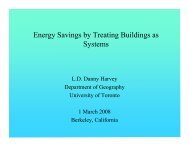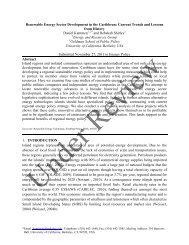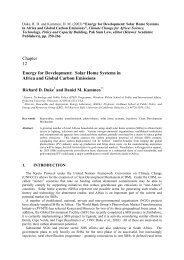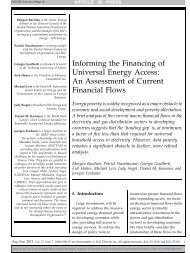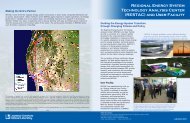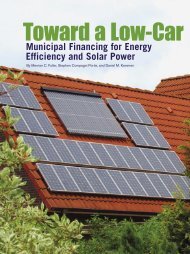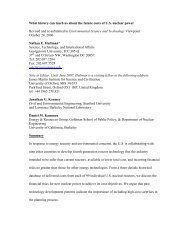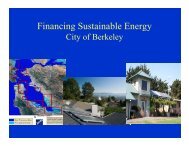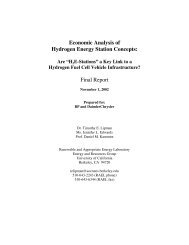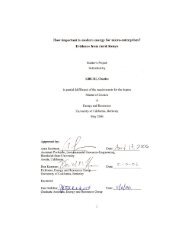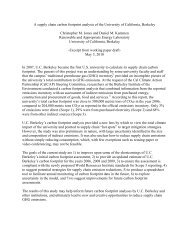Testing Small Wind Turbine Generators - Renewable and ...
Testing Small Wind Turbine Generators - Renewable and ...
Testing Small Wind Turbine Generators - Renewable and ...
- No tags were found...
You also want an ePaper? Increase the reach of your titles
YUMPU automatically turns print PDFs into web optimized ePapers that Google loves.
<strong>Wind</strong> turbines are comprised of to two main subsystems: one, the rotor, captures windpower <strong>and</strong> converts it to mechanical power. The second subsystem is the generator, whichconverts that mechanical power into electricity. Of the two, rotor design is by far the sexierpursuit: the rotor is the most visible part of the turbine <strong>and</strong> the part that interacts directlywith the wind, making its design essential for effective operation <strong>and</strong> aesthetic acceptance.Proof of this is the number of rotor designs in existence.One design–the three-bladedhorizontal axis rotor–has become extremely popular, but it is by no means ubiquitous, noris every such rotor designed in the same way. But no less important to the effectivenessof a wind turbine is the design of its generator. For one, the generator determines howefficiently mechanical power produced by the rotor is converted to electrical power. Evenmore importantly, the generator determines how the rotor interacts with the wind, byaffecting how a specific electrical loading translates into mechanical loading of the rotor.One generator might require a rotor to rotate quickly to reach a specific voltage, while adifferent generator could reach that same voltage at low speed. Depending on the designof the rotor, either case could be ideal. It is crucial, then, that the generator <strong>and</strong> rotor bedesigned in t<strong>and</strong>em, so they can work together most effectively.Of course, it is impossible to design around a generator when that generator’s propertiesare not well understood. This is especially true when a new generator is developed. A novelgenerator must be characterized though testing; not just to guide its improvement, butalso to inform the design of the entire wind turbine it will be a part of. But even whenan off-the-shelf generator is utilized, it is sometimes necessary to independently test thegenerator’s performance, verifying that the generator behaves exactly as its manufacturerclaims.Such was the case for California Energy <strong>and</strong> Power (CE&P), a startup company developingsmall vertical axis wind turbines. For their 1 kW prototype wind turbine, CE&Pobtained a set of generators from a manufacturer in China: Fēng Huá <strong>Generators</strong> Ltd. ofShĕn-Yéng. The <strong>Renewable</strong> <strong>and</strong> Appropriate Energy Laboratory (RAEL) was asked to testthese generators in November 2006, as part of a larger contract to test CE&P’s prototypewind turbine. This need became even more critical in January 2007, when the prototype2



